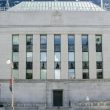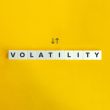by Kathy Jones, Head of Fixed Income, Charles Schwab & Company Ltd.
The pace of Fed rate hikes is rapid compared to previous cycles

Source: Bloomberg. Federal Funds Target Rate - Upper Bound (FDTR Index), using monthly data.
Note: Data is the short-term interest rate targeted by the Federal Reserve's Federal Open Market Committee (FOMC) as part of its monetary policy. Lines represent the cumulative change in the Fed funds target rate from the start of each rate hike cycle shown. For the current cycle, the fed funds target rate has risen 2.25%, from a 0.25% to 2.5%.
Past performance is no guarantee of future results.
Hike and hold?
The market is currently pricing in a peak fed funds rate of about 3.75% to 4.0% in early 2023 followed by a modest decline later in the year. While the Fed has pushed back against the idea that rates will fall next year, history suggests that it would not be such an unusual development.
In past cycles, the Fed has reversed course anywhere from three to 18 months from the peak. It only kept rates at peak levels for more than a year twice—in 1997-98 and in 2006-2007. In both those cases, the yield curve inverted—with short-term rates moving above long-term rates—just prior to the Fed cutting rates from peak levels. Inverted yield curves are associated with the risk of recession within about a year.
In past cycles, the Fed has lowered rates soon after hitting the peak

Source: Bloomberg. Federal Funds Target Rate - Upper Bound (FDTR Index). Daily data as of 9/9/2022.
Note: Data is the short-term interest rate targeted by the Federal Reserve's Federal Open Market Committee (FOMC) as part of its monetary policy.

Source: Bloomberg and the Schwab Center for Financial Research. Data as of 9/9/2022.
Near-term Forward Spread has begun to flatten

Source: Bloomberg. Fed Near-Term Forward Spread (.FEDNTFS Index). Monthly data as of 9/9/2022.
Note: The Near-Term Forward Spread is the Spread between the yield on a three-month Treasury bill and the expected yield of a three-month Treasury bill 18 months from now.
Wage growth may be the key
The recent trend in wage gains has shown some stabilization after the surge coming out of the pandemic, but at a 5.2% year-over-year pace, it is still well above the average 2% to 3% rate that prevailed from the start of the recovery from the financial crisis in 2010 to late 2015 when the Fed's last rate hiking cycle began. It seems reasonable to assume that the Fed will continue to tighten policy until wage growth is headed lower. As an indicator, we are watching the three-month rate of change since it could suggest a change in the trend.
Wage growth shows some stabilization

Source: Bloomberg, using monthly data as of 8/31/2022.
US Average Hourly Earnings All Employees Total Private Yearly Percent Change SA (AHE YOY% Index).
Quantitative tightening picks up speed
The Fed started quantitative tightening in June, capping the decline at $30 billion in Treasuries and $17.5 billion per month in agency mortgage-backed securities (MBS). In September, those caps doubled to a maximum of $60 billion per month for Treasuries and $35 billion for MBS. There is no set time frame or target level for the balance sheet reduction, but Fed officials in the past have indicated a preference for holding only treasuries at a level close to 20% of gross domestic product (GDP) compared to the recent peak of about 35% of GDP. That could take some time and involve a reduction of approximately $3 to $4 trillion dollars, which would likely be spread out over several years.
Although that sounds scary, it may not have a dramatic impact on the bond market. In the previous period of QT—from 2017 to 2019—10-year treasury yields initially rose, but then declined because the economy slowed, and inflation pressures eased. A research paper from the Atlanta Fed suggests that a $2.2 trillion drop in the balance sheet over three years is the equivalent of roughly 30 basis points of rate hike in a normal (non-crisis) scenario.
Impact of Quantitative Easing (QE) and QT on the bond market in past cycles

Source: Bloomberg, using weekly data as of 9/9/2022.
US Generic Govt 10 Yr (USGG10YR Index). Shaded areas represent the periods of Quantitative Easing (blue) and Quantitative Tightening (gray). Past performance is no guarantee of future results.
What to expect from the bond market
All interest rates are affected by the Fed's policy moves. Short-term rates tend to track the Fed's policy moves closely, but intermediate and long-term rates also reflect the outlook for growth and inflation. The more successful the Fed is in slowing the economy and inflation, the more likely it is that bond yields will stabilize or fall even as short-term rates rise.
Volatility is likely to stay elevated as liquidity in the financial system declines and the risk-free rate of interest moves up. When the Fed set short-term interest rates at zero and signaled it was going to support the economy during the pandemic, it encouraged investors to move into riskier assets when looking for yields. It lifted all boats and reduced volatility. Now the pendulum is swinging in the opposite direction with the Fed raising the risk-free rate. Investors will likely demand a higher yield to take on added risk.
As we look toward the end of 2022, we suggest investors gradually take on more interest rate risk while remaining cautious about credit risk. If the economy and Fed policy play out as we expect, then 10-year Treasury yields are likely to trend lower over the long run. However, lower credit quality bonds may weaken because they are exposed to a potential downturn in the economy.
Copyright © Charles Schwab & Company Ltd.














